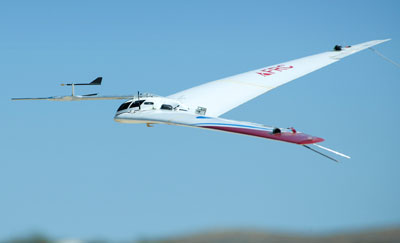 Washington:
Washington: The US space agency is planning to send a boomerang-shaped aircraft to Mars first to check if the conditions are ripe for the humans to land on the Red Planet.
Proposed to make its first flight to Mars in the 2020s, a prototype of the "Preliminary Research Aerodynamic Design to Land on Mars" (Prandtl-m) will be ready for a test launch from a high-altitude balloon later this year.
"The 'Prandtl-m' will be released at about at 100,000 feet which will simulate the flight conditions of the Martian atmosphere," said Al Bowers, NASA Armstrong chief scientist and Prandtl-m programme manager.
"The aircraft would be part of the ballast that would be ejected from the aeroshell that takes the Mars rover to the planet," Bowers added.
It would be able to deploy and fly in the Martian atmosphere and glide down and land.
The Prandtl-m could overfly some of the proposed landing sites for a future astronaut mission and send back to Earth very detailed high-resolution photographic map images that could tell scientists about the suitability of those landing sites.
The tests could validate how the aircraft works, leading to modifications that will allow it to fold and deploy from a CubeSat in the aeroshell of a future Mars rover.
A CubeSat is a miniature satellite used for space research that is usually about four inches in each dimension.
Because the Prandtl-m could ride in a CubeSat aboard the Mars rover piggyback stack going to Mars in 2022-2024, the additional weight would not add to the mission's cost.
Once in the Martian atmosphere, the Prandtl-m would emerge from its host, deploy and begin its mission.
"It will have a flight time of right around 10 minutes. The aircraft would be gliding for the last 2,000 feet to the surface of Mars and have a range of about 20 miles," Bowers said.
Before that happens, a configuration will be developed for the first of three tests here on Earth.
The actual aircraft's wingspan, when deployed, would measure 24 inches and weigh less than a pound.
With Mars gravity 38 percent of what it is on Earth, that actually allows us up to 2.6 pounds and the vehicle will still weigh only one pound on Mars.
"It will be made of composite material, either fibreglass or carbon fibre. We believe this particular design could best recover from the unusual conditions of an ejection," NASA reported.
The flight test could also include some scientific research that will apply to a Mars mission.
 Washington: The US space agency is planning to send a boomerang-shaped aircraft to Mars first to check if the conditions are ripe for the humans to land on the Red Planet.
Washington: The US space agency is planning to send a boomerang-shaped aircraft to Mars first to check if the conditions are ripe for the humans to land on the Red Planet.